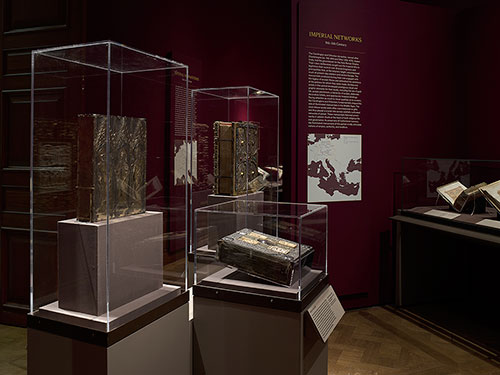9th–11th Century
The Carolingian and Ottonian dynasties, named after Charlemagne (ca. 748–814) and Otto I (912–973), respectively, laid the groundwork for the Holy Roman Empire. Their rulers deliberately sought out the imperial title to legitimize their control over diverse kingdoms and principalities that, at the empire’s height, encompassed much of present-day western and central Europe. The manuscripts produced during their rule engaged with the legacy of ancient Rome and embodied the ambitions of the patrons for whom they were made. Scribes and artists in this period developed prestigious visual and graphic elements for their books, including the use of gold ink, purple parchment, a hierarchy of scripts, elaborate decorative initials, and spectacular treasure bindings. Paying attention as much to visual qualities as to content, the Carolingians and Ottonians fundamentally shaped the role of illuminated manuscripts in the Middle Ages. The most deluxe works were often commissioned as gifts and thus played a crucial role across carefully cultivated networks of power. These manuscripts featured prominently in solemn rituals at the heart of both religious life and governance. As preservers of institutional memory, the illuminated manuscripts of this period vividly articulate notions of empire, authority, and tradition.

